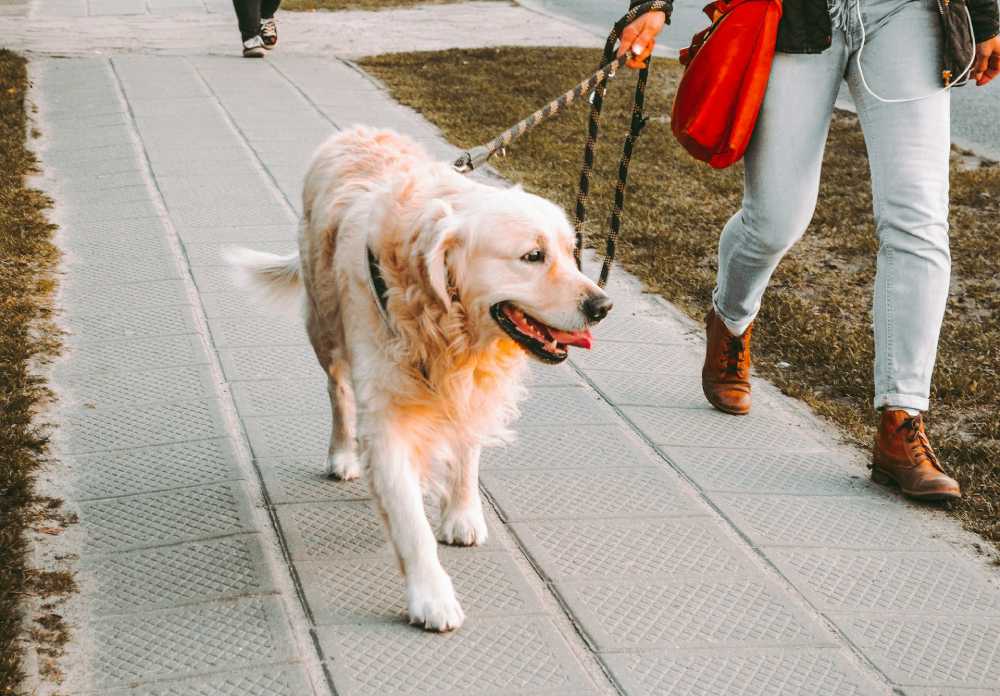Improving Your Dog’s Walk Experience with the Right Harness
Picture a serene walk in the park, disturbed only by the discomfort your dog feels from a poorly fitting collar that tugs uncomfortably at their neck with every step forward. This image underscores the significance of selecting the correct harness, which enhances control during your strolls and promotes your dear pet’s well-being.
The appropriate harness for dogs should marry functionality with comfort, ensuring your four-legged friend is content and healthy. This begins with a piece that appropriately distributes pressure away from the neck, reducing the risk of gagging or choking, particularly during sudden movement or when your dog decides to chase after a squirrel or another exciting diversion.
Contents
Types of Dog Harnesses
The pet market has a variety of harness for dogs that cater to different needs. One of the most popular ones is the front-clip harness. This harness is handy for puppies in training because it helps control pulling. It does this by steering the puppy back towards you, limiting their ability to lunge forward.
On the other hand, the back-clip harness is suited for dogs already adept at heel walking and less prone to tugging on the leash. Dual-clip harnesses present versatility, allowing the walker to switch between front and back control points as necessary. Specialty harnesses exist for specific situations, such as car safety harnesses and those designed for dogs with mobility issues.
Features to Look For in a Harness
An ideal harness will fit your dog like a glove and provide ease of use and safety features for peace of mind. Straps should be adjustable to accommodate changes in your dog’s size or coat thickness throughout the year. Padding is crucial for comfort, reducing the risk of rubbing and chafing during energetic jaunts.
Reflective elements and bright colors enhance visibility during early morning or late evening walks. Furthermore, heavy-duty buckles that do not yield to pressure are vital for securing rambunctious adventurers, whereas clips and D-rings should be made of sturdy material like stainless steel to withstand the test of time and outdoor elements.
Measuring Your Dog for the Perfect Fit
Like a bespoke suit, a harness must be precisely measured to ensure it fits perfectly. This process prevents the hazards of escaping or injury by ensuring your dog’s mobility isn’t hindered by a harness that’s too restrictive or ineffective by one that’s too loose.
To measure your dog, you’ll need a soft tape measure and a bit of patience. Please start with the neck, measuring the base where the harness will sit, then the chest at its widest point, typically right behind the front legs. These measurements provide the starting point for selecting a harness that can be adjusted for a flawless fit.
Health and Safety Considerations
Beyond the apparent benefits of control and comfort, a harness is vital to your dog’s overall health. Avoiding undue pressure on the neck significantly reduces the risk of tracheal collapse, particularly in small breeds.
A harness is quintessential for maintaining clear airways for brachycephalic breeds with flat faces, like pugs or bulldogs. Additionally, in the unfortunate event of an emergency, a harness provides a more secure and accessible handle to quickly manage your dog’s movements safely.
Selecting the Ideal Harness for Your Dog
Ultimately, the perfect harness aligns with your dog’s needs, such as size, activity level, and disposition. While a sturdy, no-pull harness may benefit an energetic puppy still learning the rules of walking etiquette, a comfortable, easy-to-don harness may better suit an older dog who enjoys strolls.
Assessing your dog’s daily activities and behavior when selecting a harness can prevent discomfort and injury and provide an efficient means to enjoy time outside together. With a deliberate selection process informed by reliable expert advice and the correct measurements, you can select a harness that makes every walk a joy for you and your dog.

